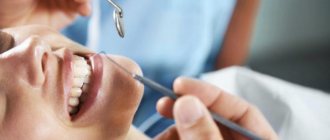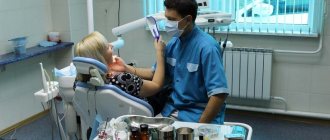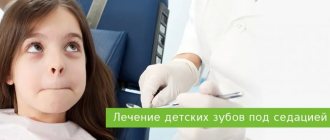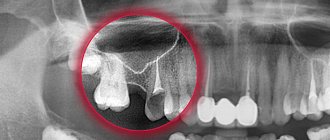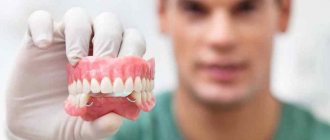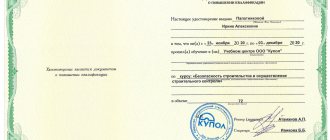| [organizational and legal form, name of organization, enterprise] | I approve [position, signature, full name of the manager or other official authorized to approve the job description] [day month Year] M.P. |
Job description of a dental therapist [name of organization, enterprise, etc.]
This job description has been developed and approved in accordance with the provisions of the Labor Code of the Russian Federation, Decree of the Government of the Russian Federation of February 14, 2003 N 101 “On the length of working hours of medical workers depending on the position and (or) specialty they occupy”, resolutions of the State Committee for Labor of the USSR and Presidium of the All-Union Central Council of Trade Unions dated October 25, 1974 N 298/P-22 “On approval of the list of industries, workshops, professions and positions with hazardous working conditions, work in which gives the right to additional leave and a shortened working day” and other regulations, regulating labor relations.
Responsibilities of a dental therapist
A qualified doctor must directly report to the job description of a dental therapist. A person with a higher medical education in the specialty “Dentistry” can be hired for the position. The doctor should know:
- basics of asepsis and antiseptics;
- basics of organizing timely medical care;
- instrument sterilization technique;
- methods of providing first aid for bleeding, painful shock, collapse;
- resuscitation techniques;
- types of modern dental equipment, as well as instruments.
A qualified dentist must be familiar with the psychology of professional communication and be able to reassure the patient.
The main responsibilities of a dental therapist include:
- carrying out the initial patient appointment;
- qualified medical examination of the patient’s oral cavity;
- collection of biomaterial for further research;
- preparing the patient for physiotherapeutic procedures;
- providing first aid for oral injuries;
- performing dental restoration;
- treatment of diseases that do not require surgical intervention;
- maintaining medical records;
- storage and accounting of received drugs;
- conducting consultations with doctors of related specialties.
The instructions of the dentist-therapist also provide for rights. The doctor can make proposals to management to improve his medical activities, make decisions independently within his competence, and also supervise the work of junior subordinate employees. A dentist-therapist has the right to improve his qualifications and undergo training in related medical specialties.
The physician is responsible for the performance of his duties. The working hours of a dental therapist should not exceed 39 hours per week.
I. General provisions
1. A person with a higher education – specialty (“Dentistry”) is appointed to the position of dentist. For professional growth and assignment of a qualification category, the fulfillment of criteria corresponding to the specialty is required. Main ways to improve qualifications:
— advanced training programs;
— professional retraining programs;
— internships;
— trainings in simulation centers;
— use of modern distance educational technologies (educational portal and webinars);
— participation in congresses, conferences, master classes
2. There are no work experience requirements.
3. Additional requirements for permission to work:
— undergoing mandatory preliminary (upon employment) and periodic medical examinations (examinations), as well as extraordinary medical examinations (examinations) in the manner established by the legislation of the Russian Federation;
- absence of a criminal record and (or) the fact of criminal prosecution or termination of criminal prosecution on rehabilitative grounds.
4. Appointment to the position of a dentist, as well as dismissal from it, is made by order of the head of the organization.
5. A dentist should know:
5.1. The biological role of the dentofacial region, the biomechanics of chewing, age-related changes in the maxillofacial region, the peculiarities of the influence of the external and internal environment on it
5.2. Basic principles of diagnosing infectious diseases, medical indications for hospitalization of patients with infectious diseases
5.3. Topographic anatomy of the head, maxillofacial region, features of blood supply, innervation and lymphatic system, structure of teeth, embryology of the dentofacial region, main disorders of embryogenesis
5.4. Etiology, pathogenesis, diagnosis of common diseases
5.5. The relationship between the structure and functioning of the dental system and disorders of the nasopharynx, respiratory and digestive systems, and musculoskeletal system
5.6. Basic issues of normal and pathological physiology of the dental system, its relationship with the functional state of other body systems and the levels of their regulation
5.7. Methods for diagnosing diseases of the temporomandibular joint and salivary glands in children and adults
5.8. Normal structure of teeth, jaws and structural disorders due to dental and facial anomalies
5.9. Clinical picture, diagnostic methods, classification of diseases of the teeth, periodontium, oral mucosa, lips
5.10. Clinical picture, diagnostic methods, classification of diseases of the bone tissue of the jaws, the peripheral nervous system of the maxillofacial region, the temporomandibular joint
5.11. Clinical manifestations of the main syndromes requiring surgical treatment
5.12. The complex relationship between dental health, nutrition, general health, disease, and medication use
5.13. Normal functioning of the dental system and disruption of its functions due to malocclusion
5.14. Clinical picture, diagnostic methods, classification of diseases of the salivary glands, congenital, acquired anomalies of teeth, dentition, alveolar processes, jaws, face
5.15. Clinical picture, symptoms of major diseases and borderline conditions of the maxillofacial region in adults and children, their diagnosis
5.16. The importance of special and additional research methods for the differential diagnosis of dental diseases
5.17. Medical indications and contraindications for the use of x-ray and other methods of additional examination
5.18. Medical devices used in dentistry (Principles of design and operating rules)
5.19. International statistical classification of diseases and related health problems
5.20. Clinical manifestations and course of common diseases, injuries and conditions in elderly and senile patients
5.21. Features of medical examination of elderly and senile patients
5.22. Structure of morbidity in old and senile age
5.23. Psychological and behavioral characteristics of elderly and senile patients
5.24. Features of general and special hygiene of elderly and senile patients
5.25. Features of pharmacokinetics and pharmacodynamics of drugs in elderly and senile patients
5.26. Methods of using medical devices, chemicals and drugs to control dental plaque
5.27. Features of providing medical care in emergency and emergency forms for dental diseases
5.28. Groups of drugs, their pharmacokinetics, pharmacodynamics, drug compatibility
5.29. General and functional methods of treating patients with maxillofacial pathology
5.30. Basic principles of treating patients with infectious diseases
5.31. Basic methods of auxiliary surgical treatment of patients with dentoalveolar anomalies
5.32. Morphological changes in the dental system during orthopedic and orthodontic treatment
5.34. Clinical picture, basic methods of orthopedic treatment of pathology of hard tissues, periodontal diseases, pathological abrasion, pathology of the temporomandibular joint
5.35. Clinical picture, symptoms of major diseases and borderline conditions of the maxillofacial region in adults and children, their treatment
5.36. Treatment methods for dental and facial anomalies in children and adults
5.37. Principles, techniques and methods of anesthesia in dentistry
5.38. Modern medical products (equipment, instruments and materials) used in dentistry
5.39. Medical indications and contraindications for rehabilitation measures for various diseases and pathological conditions
5.40. Basic principles of rehabilitation of patients with infectious diseases
5.41. Basic principles of rehabilitation of patients with diseases of the maxillofacial area
5.42. Principles of clinical observation in various categories of patients and among the population
5.43. Features of specific and nonspecific prevention of infectious diseases
5.44. Features of cancer prevention
5.45. Fundamentals of preventive medicine aimed at improving public health
5.46. Basic criteria for a healthy lifestyle and methods for its formation
5.47. Social, hygienic and medical aspects of alcoholism, drug addiction, substance abuse, basic principles of their prevention
5.48. Forms and methods of sanitary and hygienic education among the population and medical workers
5.49. Basic hygiene measures of a health nature that promote health and prevent diseases
5.50. The procedure for providing medical care by profile
5.51. Standards of medical care by disease
5.52. Clinical recommendations (treatment protocols) regarding the provision of medical care
5.53. Conditions requiring emergency and emergency medical care
5.54. Labor protection requirements, fire safety, emergency procedures
5.55. Rules for the use of personal protective equipment
5.56. Sanitary and epidemiological requirements
5.57. Methodology for performing resuscitation measures
5.58. Rules for issuing documents certifying temporary disability
5.59. Rules for preparing documents certifying temporary disability
5.60. Principles of conducting examination of temporary disability
5.61. Job responsibilities of medical workers in medical organizations
5.62. Criteria for assessing the quality of medical care
5.63. Features of maintaining medical records
5.64. General issues of organizing medical care to the population
5.65. Standards and quality management systems for medical (dental) services
5.66. Legislation of the Russian Federation in the field of health care and regulations governing the activities of medical organizations
5.67. _____________________________________________________________________
6. The dentist reports directly to __________________________.
7. During the absence of a dentist (vacation, illness, etc.), his duties are performed by a person appointed in the prescribed manner. This person acquires the corresponding rights and is responsible for their proper execution.
8. A dentist must observe medical confidentiality.
9. A dentist must comply with the principles of medical ethics and deontology when working with patients (their relatives/legal representatives) and colleagues.
10. ________________________________________________________________
The difference between a dental therapist and allied health professionals
What is the difference between a dentist and a dental therapist? Dentist is the general name for all doctors who provide care related to diseases of the oral cavity. The main work of a therapist is related to the restoration of teeth and the treatment of gum pathologies. If it is necessary to undergo surgery, restore the correct position of incisors and molars in the dentition, or perform prosthetics, the patient is referred to another doctor.
There is a significant difference between a dentist and a dental therapist. A dentist is trained at a college and receives basic knowledge in the field of dentistry. Such a doctor can only conduct an initial examination, treat simple gum diseases, and place a filling on a tooth in the early stages of caries. The dentist can also talk with the patient about proper oral hygiene and the prevention of dental diseases. If a young specialist identifies diseases that are not within his competence, he refers the patient to a dentist-therapist.
Legislation on professional standards
The procedure for working with professional standards is prescribed by Art. 195.3 of the Labor Code. It was approved by Federal Law No. 122-FZ dated May 2, 2015. It notes that some organizations must necessarily use professional standards.
These are the following institutions (according to Government Decree No. 584 dated June 27, 2016):
- state and municipal sector;
- companies that are more than half owned by the state;
- where there are positions that need to be provided with social guarantees established by legal acts;
- where there are positions for which professional standards must be applied.
Answers to popular questions about professional standards can be found in the letter of the Ministry of Labor dated 04/04/2016 No. 14-0/10/B-2253.
Diseases treated by a therapist
If you experience pain in the oral cavity, a visit to a dentist cannot be postponed. A good specialist will provide quick and painless dental treatment and will prevent the development of complications.
Caries
If a dentist can easily cope with the initial stage of the disease, then at an advanced stage of the pathological process one cannot do without the help of a dentist-therapist. The doctor removes damaged tooth tissue, disinfects the affected area, and also creates conditions for reliable fixation of the filling. Restoration involves restoring the integrity and functionality of an incisor or molar.
Pulpitis
This disease develops as a consequence of advanced caries due to untimely medical care. The destructive process reaches the soft tissue of the tooth. The job responsibilities of a dental therapist involve treating the disease in several stages. First of all, the specialist opens the tooth cavity to gain access to the affected nerve. Next, a paste is applied to “kill” the pulp. After a few days, the dentist removes the nerve, thoroughly cleans the canals using an antiseptic and performs a filling.
Pathologies of the oral mucosa
This category includes pathological processes such as stomatitis, cheilitis, gingivitis, glossitis, and periodontitis. The dentist's report must contain a description of the chosen treatment method, in accordance with the causes of the disease. Treatment of non-infectious pathologies is carried out using antiseptic solutions and ointments.
If the disease is caused by pathogenic microflora, the physician may prescribe antibiotics, antiviral or antifungal drugs. Additionally, the specialist prescribes physiotherapeutic procedures to quickly restore the affected mucosa.
III. RIGHTS OF A DENTIST
3.1. A dentist has the right to:
- providing him with work stipulated by the employment contract; — a workplace that complies with state regulatory requirements for labor protection and the conditions provided for by the collective agreement; — complete reliable information about working conditions and labor protection requirements in the workplace; — professional training, retraining and advanced training in the manner established by the Labor Code of the Russian Federation and other federal laws; — obtaining materials and documents related to its activities, familiarizing itself with draft decisions of the organization’s management relating to its activities; — interaction with other departments of the Employer to resolve operational issues of their professional activities; — submit proposals on issues of their activities for consideration by their immediate supervisor.
When to see a dentist
You should not postpone a visit to the dentist when the following symptoms are observed in the oral cavity:
- bleeding gums;
- rashes on the tongue and inner surface of the cheeks;
- acute or nagging toothache;
- bad breath;
- darkening of the enamel of incisors and molars;
- change in tooth shape.
A dental therapist is also needed to conduct regular preventive examinations. It is necessary to visit a specialist twice a year, even if there are no unpleasant symptoms.
Why are professional standards needed in private companies?
Private owners do not necessarily need to use these documents. Some organizations, however, use them. The reasons may be:
- disagreements between the employer and employees regarding labor tasks are resolved much easier;
- fewer disputes with agencies inspecting the organization;
- you can approve the requirements for applicants for a particular position in the company;
- You can establish the reasons for employees to undergo additional training.
Companies can use both professional standards and qualification reference books.
Signs of a good specialist
Dental therapists see patients in thousands of specialized clinics. To make the right choice, you should know what criteria a good specialist must meet:
- positive professional reputation and good reviews from patients;
- extensive practical experience;
- friendly attitude towards patients.
- availability of specialized medical education confirmed by a diploma;
- certificates of completion of advanced training courses.
The desire to improve one’s professionalism, study new methods of treating oral diseases, as well as an individual approach to each patient is what makes a dental therapist a good specialist.
How to introduce work with professional standards into an organization
There is a certain procedure for implementing professional standards in a company:
- The head of the company, by his order, assembles a working group. It includes lawyers, personnel officers, heads of departments (structural units) or other competent employees. The group’s tasks are to draw up a plan for the organization’s transition to professional standards.
- Members of the working group compare professional standards and positions available in the company. Select those standards that are suitable for the positions.
- If necessary, positions are renamed.
- Determine whether employees require additional training.
- Make changes to job descriptions in the organization.
Important! Employees must undergo additional training when, according to the professional standard, the position requires higher qualifications. If the employee refuses to study, he is transferred to another position or dismissed.
Job description
Provides orthopedic treatment of defects and deformations of the maxillofacial area. Conducts orthopedic treatment of pathology of the temporomandibular joint.
Evaluates the quality of dentures manufactured by a dental technician. Carries out rehabilitation measures after the application of dentures and conducts clinical observation.
Provides education to patients regarding proper oral hygiene. Prepares accounting and reporting documentation approved for use in the Russian Federation. Determines the amount of necessary first and emergency aid and provides it. Identifies indications for urgent or planned hospitalization. Identifies possible complications of drug therapy.
V. WORKING CONDITIONS OF A DENTIST
5.1. The working hours of a dentist are determined in accordance with the internal labor regulations established by the Employer. 5.2. Due to production needs, the dentist is required to go on business trips (including local ones). This job description for a dentist has been developed in accordance with ___________________________________________________________________________ (name, number and date of the document) AGREED BY: Legal Adviser _________________ ______________ “___” _________ ____ (full name) (signature) I have read the instructions: _____________/_________/ “ ___»_________ ____ (signature) (full name)
Dentistry unified qualification directory
Modern equipment, instruments and materials used in dentistry. 1.5.5. Actions of personnel upon detection of a patient with signs of particularly dangerous infections, AIDS. 1.5.6.
Rules and regulations of occupational health, safety, industrial sanitation and fire protection. 1.6. During the period of temporary absence of the Employee, his duties are assigned to.
II. JOB RESPONSIBILITIES 2.1. Employee: 2.1.1. Carry out diagnostics, provide therapeutic and emergency care for diseases and lesions of the teeth, oral cavity and maxillofacial area. 2.1.2.

